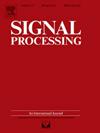Transfer function-based robust filtering: Review and critical evaluation
IF 3.4
2区 工程技术
Q2 ENGINEERING, ELECTRICAL & ELECTRONIC
引用次数: 0
Abstract
Promoted by Wilson in his 1989 year work through the convolution and Hankel operator norms, the transfer function approach (TFA) developed by many authors has earlier emerged as a novel trend of sorts in robust estimation of system state to minimize the estimation error bounded norm for the maximized error bounded norm. This paper takes a fresh look at the problem through the bias correction gain of a recursive filter, reviews and revisits the existing robust , energy-to-energy or , energy-to-peak or generalized (G), and peak-to-peak or filtering solutions, and critically evaluates their performances. It is shown that the effective ranges between the larger gain of the optimal Kalman and the smaller gain of the robust unbiased finite impulse response (UFIR) filter. That is, regardless of the robust criterion, the gain produced by the sophisticated TFA turns out to be quite sandwiched by the Kalman and UFIR filters. The filters are tested based on extensive numerical simulations and experimentally in terms of mean square error, robustness, and quality factor.
基于传递函数的鲁棒滤波:回顾与关键评价
由Wilson在1989年的工作中通过卷积和Hankel算子范数提出的传递函数方法(TFA)已经成为许多作者在系统状态的鲁棒估计中以最小化估计误差有界范数为最大误差有界范数的一种新趋势。本文通过递归滤波器的偏置校正增益K重新审视了这个问题,回顾并重新审视了现有的鲁棒H2、能量对能量或H∞、能量对峰值或广义H2 (GH2)、峰对峰或L1滤波解决方案,并批判性地评估了它们的性能。结果表明,最优卡尔曼滤波器的最大增益与鲁棒无偏有限脉冲响应(UFIR)滤波器的最小增益之间存在有效K值的变化。也就是说,不管鲁棒准则是什么,由复杂的TFA产生的增益被卡尔曼和UFIR滤波器夹在中间。基于广泛的数值模拟和实验,对滤波器进行了均方误差、鲁棒性和质量因子的测试。
本文章由计算机程序翻译,如有差异,请以英文原文为准。
求助全文
约1分钟内获得全文
求助全文
来源期刊

Signal Processing
工程技术-工程:电子与电气
CiteScore
9.20
自引率
9.10%
发文量
309
审稿时长
41 days
期刊介绍:
Signal Processing incorporates all aspects of the theory and practice of signal processing. It features original research work, tutorial and review articles, and accounts of practical developments. It is intended for a rapid dissemination of knowledge and experience to engineers and scientists working in the research, development or practical application of signal processing.
Subject areas covered by the journal include: Signal Theory; Stochastic Processes; Detection and Estimation; Spectral Analysis; Filtering; Signal Processing Systems; Software Developments; Image Processing; Pattern Recognition; Optical Signal Processing; Digital Signal Processing; Multi-dimensional Signal Processing; Communication Signal Processing; Biomedical Signal Processing; Geophysical and Astrophysical Signal Processing; Earth Resources Signal Processing; Acoustic and Vibration Signal Processing; Data Processing; Remote Sensing; Signal Processing Technology; Radar Signal Processing; Sonar Signal Processing; Industrial Applications; New Applications.
 求助内容:
求助内容: 应助结果提醒方式:
应助结果提醒方式:


